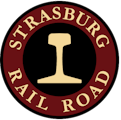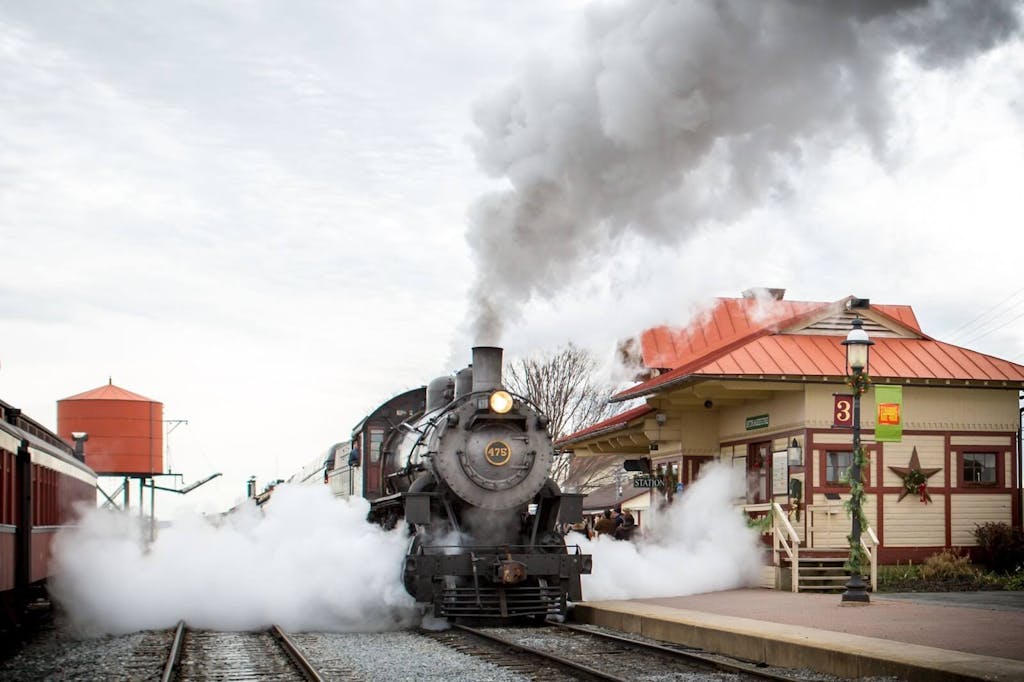THE EVOLUTION OF TRAVEL ON PASSENGER TRAINS
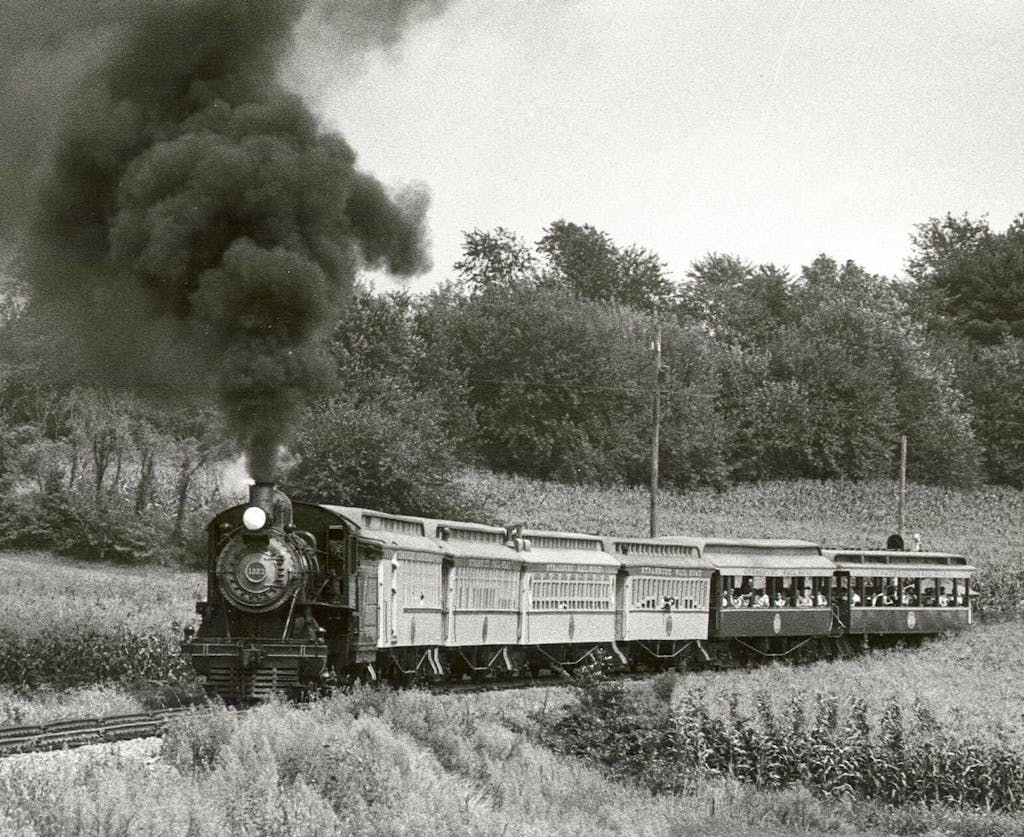
In the “Golden Age” of railroads, passenger trains were the safest and fastest mode of transportation. Near and far, they carried people to and from work, across state lines, and even across the country.
They weren’t always the preferred method of travel, however. As we look into their history, we’ll examine how the passenger train evolved into the most popular method of travel, plus what led to their decline, and how passenger railways function today.
History of Passenger Trains
The first steam locomotive to carry passengers on a public railway was Locomotion No. 1. It was built by George Stevenson, who later became known as “the father of railways.” It carried 450 passengers in England, from Darlington to Stockton, on September 27th, 1825 at a speed of 15 mph.
Shortly after, the US followed in England’s footsteps and chartered its first railway for freight and passengers, the Baltimore & Ohio Railway. The first regularly-scheduled passenger train, however, is credited as The Best Friend of Charleston — a US-built locomotive operated by a passenger rail service in South Carolina.
During that time, there were no first or second-class train cars, which had come into use across the pond. All passengers shared the same riding experience and seating was strictly wooden benches.
In the 1840s, 2,800 miles of rails were built and operated in the United States. The US still hadn’t implemented class cars on their passenger cabs, but they did create a gentleman’s car and a ladies’ car. According to Charles Dicken’s first-hand account, the only difference was that the gentleman’s car was reserved for smoking, which the ladies’ car prohibited.
As the railroad industry started to become a vital part of American culture, many passenger railways worked on improving the experience for their riders. They increased safety measures, improved braking systems, and created a uniform construction of railbeds to create a smoother ride.
Passenger railroads also started to improve the design of their train cars to increase their riders’ comfortability. During this period, single-class cars came to their demise, and first, second, and sometimes even third-class cars were created.
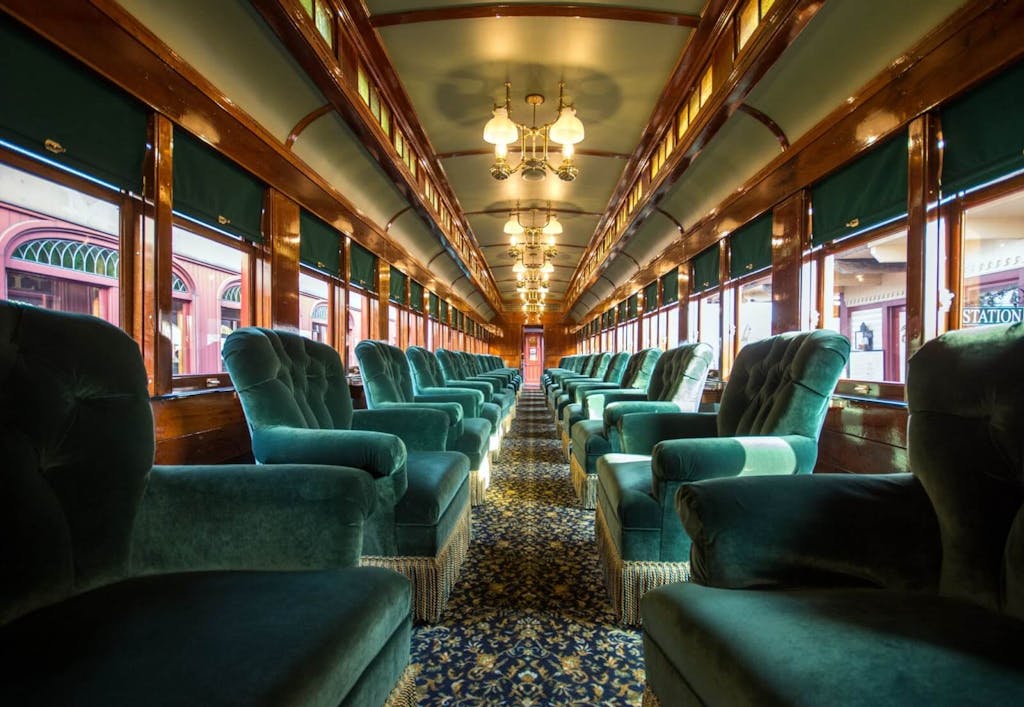
First-class cars were decorated to portray luxury. Upholstered chairs and carpets were built into passenger cabs, and curtains were put up to increase privacy for first-class riders.
By the 1860s, passenger train travel was a booming industry in the US. There were over 30,000 miles of tracks in operation across the country. And over the next few years, passenger railways would play a pivotal role in the Civil War.
If there were any doubts surrounding the effectiveness of trains, their role in the Civil War quickly squashed them. Passenger services were used on both sides to transport passengers and materials quickly to battle.
The end of the war kicked off the “Golden Age” of train travel. Trains became the best, most-preferred mode of transportation for the next 50 years. They were used by Presidents from Ulysses S. Grant to Franklin D. Roosevelt, by the rich and poor, and even by emigrants.
Flash forward to the start of World War I, the federal government seized control of all railways from their private owners. When railroad companies regained private ownership just three years later, the tracks were in serious need of repair.
The railroads were in bad shape and for the first time, trains were challenged by other methods of travel: automobiles, buses, and planes. With these obstacles looming, passenger railways were desperate to keep their services alive.
They invested billions of dollars into the new locomotives and equipment, but ultimately, passenger travel never returned to the booming industry it once was. Many railroad companies were forced to file for bankruptcy leaving travel by train forever changed.
To help relieve some of the pressure on railway owners, the federal government signed the Rail Passenger Service Act of 1970. In it, they created the National Railroad Passenger Corporation to take over intercity rail service— what we know today as Amtrak.
The Rail Passenger Service Act and the Staggers Rail Act signed 10 years later, paved the way for the national railroad service to grow into a safe, efficient, and sustainable industry within the United States.
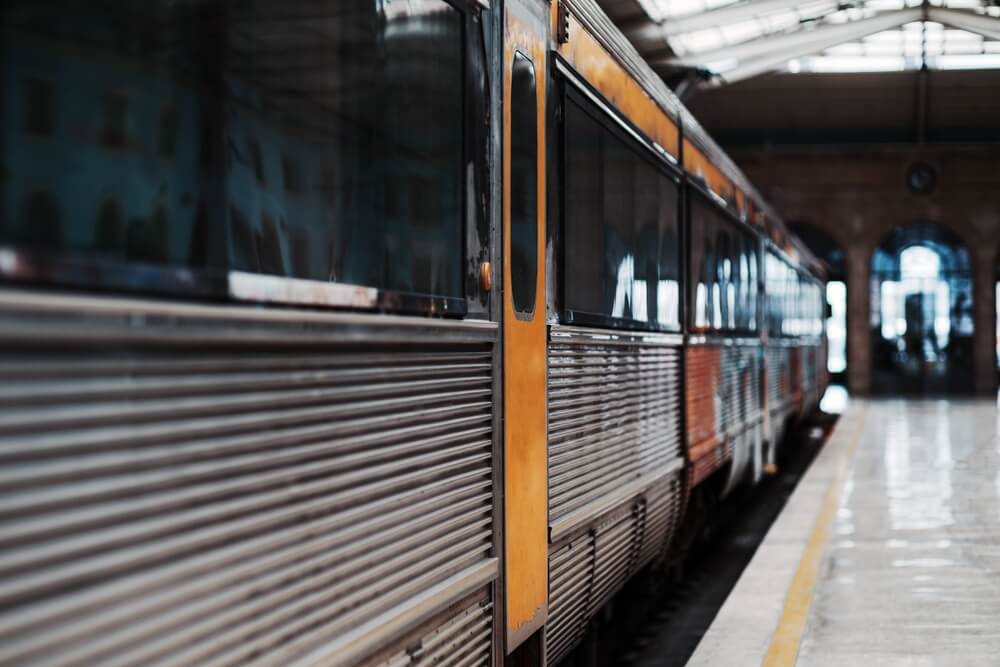
How Passenger Trains are Used Today
Though they’re not the most popular method of travel anymore, passenger trains are still used today across the US. There are 3 types of rail systems: intercity passenger, commuter, and freight networks. Intercity passenger and commuter trains are the primary passenger railway services in use today.
Commuter rails are a common means of transportation in suburban cities. Many people in these communities don’t own cars because traffic makes traveling by car take longer. Instead, these people use commuter rails to get to where they need to be.
People in these metropolitan areas use commuter rails to get to and from work, to grocery or retail stores, or even to entertainment venues. Pre-COVID, over 500 million passenger trips were completed each year via commuter rails.
Intercity passenger rails facilitate passenger travel on a national level. There are 3 service lines operated: Northeast Corridor (NEC), Long-Distance Routes, and State-Supported Routes. Of those, State-Supported Routes are responsible for 47% of Amtrak’s total ridership.
With over 750 miles between endpoints, intercity passenger rails are a desirable choice for city-to-city or state-to-state travel. No to mention, they’re a green alternative to traveling by car or plane.
With growing concerns about our climate, transportation by intercity passenger services could see an increase since they are 47% more energy efficient than cars, and 33% more than air travel.
While freight rails carry cargo instead of passengers, they’re important to note because they provide tracks for passenger and commuter rail services. Close to 25% of commuter railroad tracks and 70% of intercity railroad tracks are owned by freight railways.
Though it’s not nearly as popular as it once was, Amtrak has helped restore the nation’s use of passenger railways to reestablish economic growth.
Passenger Train Excursions Near Lancaster, PA
Excursion trains are another popular way that passenger railways continue to be used today. Operated by railroad companies for the purpose of entertainment, passenger train excursion offer riders a taste of America’s history.
If you’re looking for an authentic steam train experience near Lancaster, PA, there are plenty of unique passenger train excursions to explore.
Strasburg Rail Road
Strasburg Rail Road is the longest continually operated railroad in America. Located in Strasburg, PA, we offer chartered train events and excursions for passengers to enjoy year-round.
For 200 years, our mission has been to give tourists an authentic, early 20th-century steam train experience. In a world that’s shifted to diesel and electric locomotives, we are one of the few passenger railways that still use fully restored steam engines to pull passenger cars.
Ride through the heart of Amish country in luxury in one of our president or first-class cars, or ride in a restored 20th-century wooden coach car. Offering wine and beer tastings, holiday trains, and live-action demonstrations, Strasburg Rail Road excites train buffs of all ages.
Today, we are one of the most visited passenger train attractions in the US, attracting approximately 300,000 passengers each year.
Experience an authentic steam train ride at Strasburg Rail Road. Book tickets to ride aboard America’s oldest operating short-line railroad.
